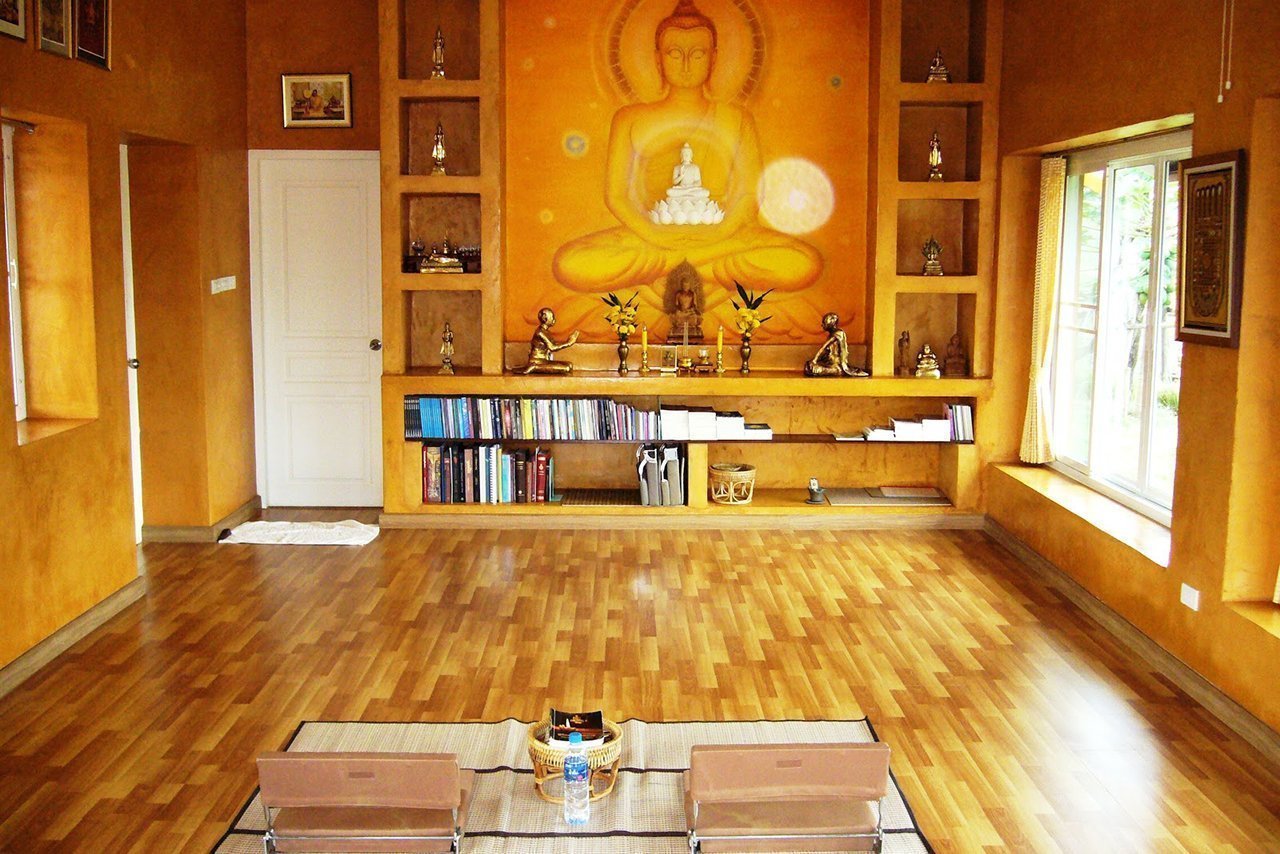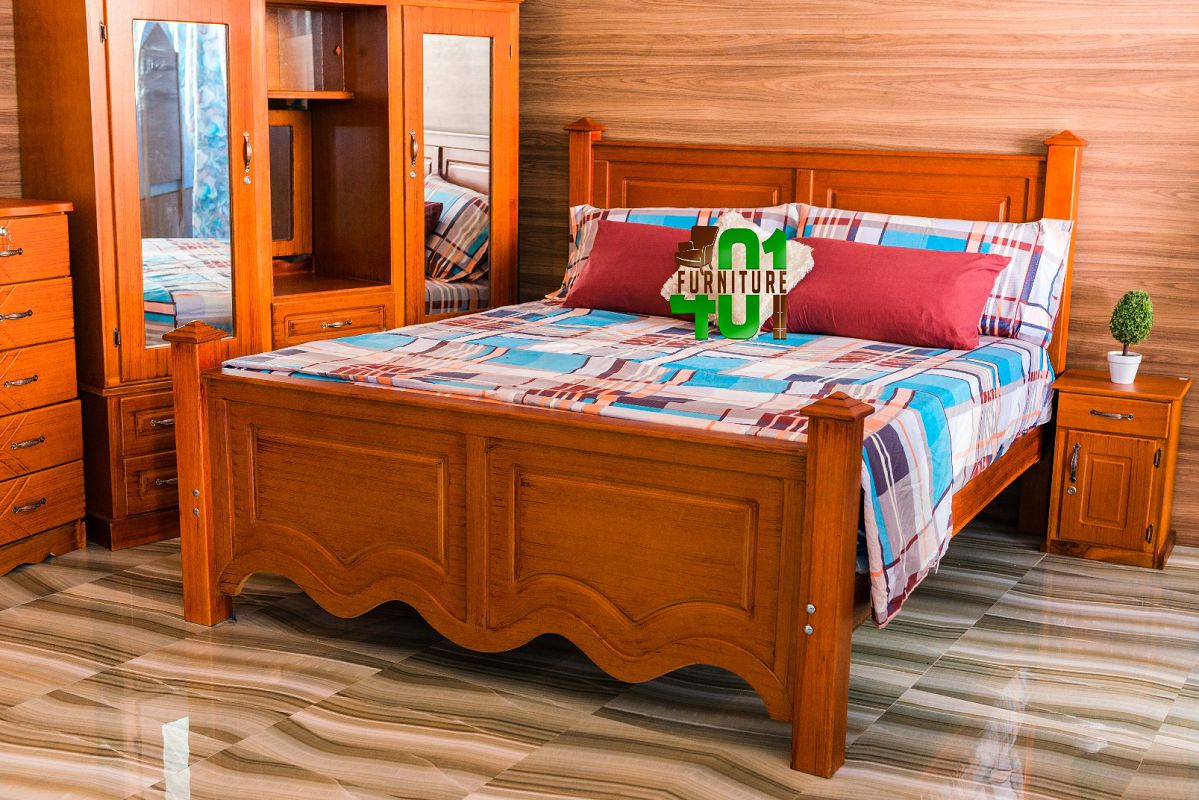Buddhist-style house designs can provide a homeowner with a sense of tranquility, peace, and harmony. These calming features are important for anyone looking to create a space to practice inner reflection and meditative practices. There are several styles of Buddhist-influenced house designs that can give a unique, spiritually fulfilling environment for those that inhabit it. Part of creating a Buddhist home can include decorating it with tranquil artwork and the addition of Zen gardens, which can give a space an air of balance and serenity. Other ideas include adding symmetry to ensure a balanced room, focusing on natural colors, and utilizing traditional Zen concepts such as bare feet. Buddhist House Design Ideas
Zen design principles are rooted in traditional Japanese styling, and the same principles can also be found in Buddhist house designs. A large part of adhering to Zen design principles involves the utilization of simple items with a natural, yet profound purpose. Incorporating elements of nature is important when it comes to these principles, as they are meant to reflect and connect us with the outside world. Many of those who practice Zen Buddhism believe that immersion in nature is the key to understanding the deeper meaning of being. Utilizing crystalline-like shapes, minimizing distractions, and limiting furniture pieces are all essential parts of adhering to Zen principles. Zen Design Principles for Traditional Japanese and Buddhist Homes
Japanese home design has a long and illustrious history that dates back centuries. When it comes to the exterior of a traditional Japanese home, there are a few key elements that are fairly standard. This includes an enclosed entryway, generally accompanied by a door made of wood or bamboo. Additionally, sliding windows, grids, and decorations made of paper are also quite common on traditional Japanese homes. Interiors of traditional Japanese homes have a few defining features, which include tatami mats for seating, shoji screens, and low built-in seating. Complex and decorative woodwork is a staple of traditional homes, often featuring intricate patterns and textures that are drawn from nature. Japanese Home Design: Exploring Typical Exterior and Interior Features of Traditional Homes
Designing a modern Buddhist-style home relies on many of the same principles of traditional Japanese style home design, yet can take a more contemporary twist. Minimalist decorating is a great way to bring in modern elements while also adhering to Zen principles. Combining concepts of both minimalism and nature is key for achieving a modern Buddhist-style home. Meditation and yoga studios could be used in the home to create more mindful living areas, while nature-inspired decoration pieces like plants, wood carvings, and unique art pieces can be a great way to decorate in the Buddhist style. Additionally, art pieces that evoke peace and tranquility are good choices to create the right atmosphere. Modern Buddhist Home Design
Contemporary Buddhist house designs are great for those looking for a way to bring modern design elements to traditional Zen concepts. While minimalist decorations are ideal for achieving the modern Buddhist look, contemporary home design also incorporates traditional Japanese elements as well. These can include intricately designed wood panels, wall scrolls, tatami mats, rock gardens, and more. In addition to these elements, a homeowner can add a few modern twists to the design such as brightly colored artwork, colorful structures, and bold furnishings. This combination brings a modern yet still calming atmosphere to any home. Contemporary Buddhist House Design
Tibetan Buddhist house design has a different feel and aesthetic than traditional Japanese Buddhist design. For starters, traditional Tibetan homes are typically much larger and spaced further apart than their Japanese or Chinese counterparts. Inside the home, however, a person will find various Buddhist symbols and designs, such as a statue of the Buddha, colorful wall hangings, and hand-tied knots. Rooflines, such as high gables, are popular in Tibetan house design and can be seen in many traditional homes. Tibetan-style house designs are a great way to bring a unique, old-world charm to any home. Traditional Tibetan Buddhist House Design
The tatami room is a staple of traditional Japanese Buddhist homes. These unique and highly versatile rooms are traditionally used for sleeping, studying, and relaxing due to their large cushioned areas. The tatami mats are made from a combination of rice straw and rush, and the traditional Japanese home often has a tatami room for each purpose. Due to their low seating and soft cushion, tatami rooms are perfect for relaxing in. Wall decorations such as paintings, carvings, and scroll walls are often added to give a tatami room a unique, Buddha-inspired look. Tatami Room: Exploring the Japanese Buddhist Room
Zen Buddhist house designs are the perfect combination of traditional and contemporary styles. Zen design is rooted in simplicity and balance, which means the use of only the necessary items and decorations to bring a sense of serenity to a home. When incorporating Zen in a Buddhist-style home, use minimalist colors such as earthy tones, whites, grays, and blues. Utilize natural materials such as wood, granite, and stone to create a calming atmosphere. The addition of a Zen garden, shoji screens, and small lanterns are great ways to bring a spiritual touch to any space. Zen Buddhist House Designs
Sustainable Buddhist house designs are a great way to create a home that is both environmentally friendly and mindful of Buddhist values. Incorporating methods such as rainwater harvesting, solar power, recycling programs, energy efficient appliances, and using organic materials are all great ways to make homes more sustainable while also creating a peaceful and calming atmosphere. For those who want to follow environmental ways, green construction materials can be used to create a sustainable, Buddha-focused home. Sustainable Buddhist House Designs
Buddhist house design has a long and rich history, dating back to the early Imperial Chinese times. The traditional Japanese home was influenced by this style of design and a number of Buddhist rituals are still practiced in many households today. From the utilization of natural elements to balance, the adoption of tatami mats, carpentry techniques, and decorations such as wall scrolls, Buddhist house design has shaped many popular designs today. The combination of peace, serenity, and nature are essential elements in a Buddhist-style house design. Brief Historical Overview of Buddhist House Design
Creating a garden in the style of a Buddhist temple is a great way to bring a spiritual, nature-filled atmosphere into a home. Planting trees, flowers, and shrubs strategically in the garden while utilizing symmetrical shapes and low-grown plants will create an area of balance. Accompanying the garden with a Buddhist-inspired water feature or a meditation path with peaceful decorations will bring a sense of understanding and beauty to any home. Adding a temple-style garden to a home will bring a unique, spiritual ambiance, perfect for those looking for a more mindful way of living. Creating a Home Garden in the Style of a Buddhist Temple
Creating a Tranquil and Sacred Space with Buddhist House Design
 For those who follow the Buddhist faith, their home can be more than a place to dwell—it can also be a place in which to practice their beliefs. As such, incorporating Buddhist house design principles can be an important way of creating a tranquil and sacred space for mindfulness, meditation, and daily Buddhist practice.
Buddhist house design
incorporates features and fixtures that can bring about a profound sense of ease, relaxation, contemplation, and peace.
For those who follow the Buddhist faith, their home can be more than a place to dwell—it can also be a place in which to practice their beliefs. As such, incorporating Buddhist house design principles can be an important way of creating a tranquil and sacred space for mindfulness, meditation, and daily Buddhist practice.
Buddhist house design
incorporates features and fixtures that can bring about a profound sense of ease, relaxation, contemplation, and peace.
Feng Shui and Zen Design Elements
 Feng shui and Zen design principles are closely entwined with Buddhist house design, and it is often the relationship between these two separate design concepts that creates the most peaceful and serene spaces. Incorporating harmonious colors, textures, and patterns into the design of a home can help to create a more calming and tranquil environment. It is helpful to strive for a sense of balance in all aspects of Buddhist house design, from color choices to room layout. A great way to create harmony is by connecting the interior design elements with the outdoors, using natural materials and emphasizing views of nature.
Feng shui and Zen design principles are closely entwined with Buddhist house design, and it is often the relationship between these two separate design concepts that creates the most peaceful and serene spaces. Incorporating harmonious colors, textures, and patterns into the design of a home can help to create a more calming and tranquil environment. It is helpful to strive for a sense of balance in all aspects of Buddhist house design, from color choices to room layout. A great way to create harmony is by connecting the interior design elements with the outdoors, using natural materials and emphasizing views of nature.
Lighting and Aromatherapy
 Good lighting is also an essential element of Buddhist home design, and natural lighting should be maximized with windows, sliding doors, and skylights. Light fixtures should be chosen carefully for the overall ambiance of the home. Incorporating essential oils into the interior design can also create an atmosphere of calm and peace. Diffusers and scented candles are both great ways of bringing aromatherapy into a Buddhist home.
Good lighting is also an essential element of Buddhist home design, and natural lighting should be maximized with windows, sliding doors, and skylights. Light fixtures should be chosen carefully for the overall ambiance of the home. Incorporating essential oils into the interior design can also create an atmosphere of calm and peace. Diffusers and scented candles are both great ways of bringing aromatherapy into a Buddhist home.
Creating an Altar Space
 Creating a place for contemplation in the home is an easy way of creating a sanctuary that helps to promote spiritual practice. Incorporating an altar space into a room is a great way to bring a spiritual presence to a home. For a Buddhist altar, there should be a statue of the Buddha, along with other items such as flowers, candles, and incense. However, it is important not to let the altar overwhelm the space—its purpose is to bring a sense of balance to the home, rather than to overpower it.
Creating a place for contemplation in the home is an easy way of creating a sanctuary that helps to promote spiritual practice. Incorporating an altar space into a room is a great way to bring a spiritual presence to a home. For a Buddhist altar, there should be a statue of the Buddha, along with other items such as flowers, candles, and incense. However, it is important not to let the altar overwhelm the space—its purpose is to bring a sense of balance to the home, rather than to overpower it.













































































































